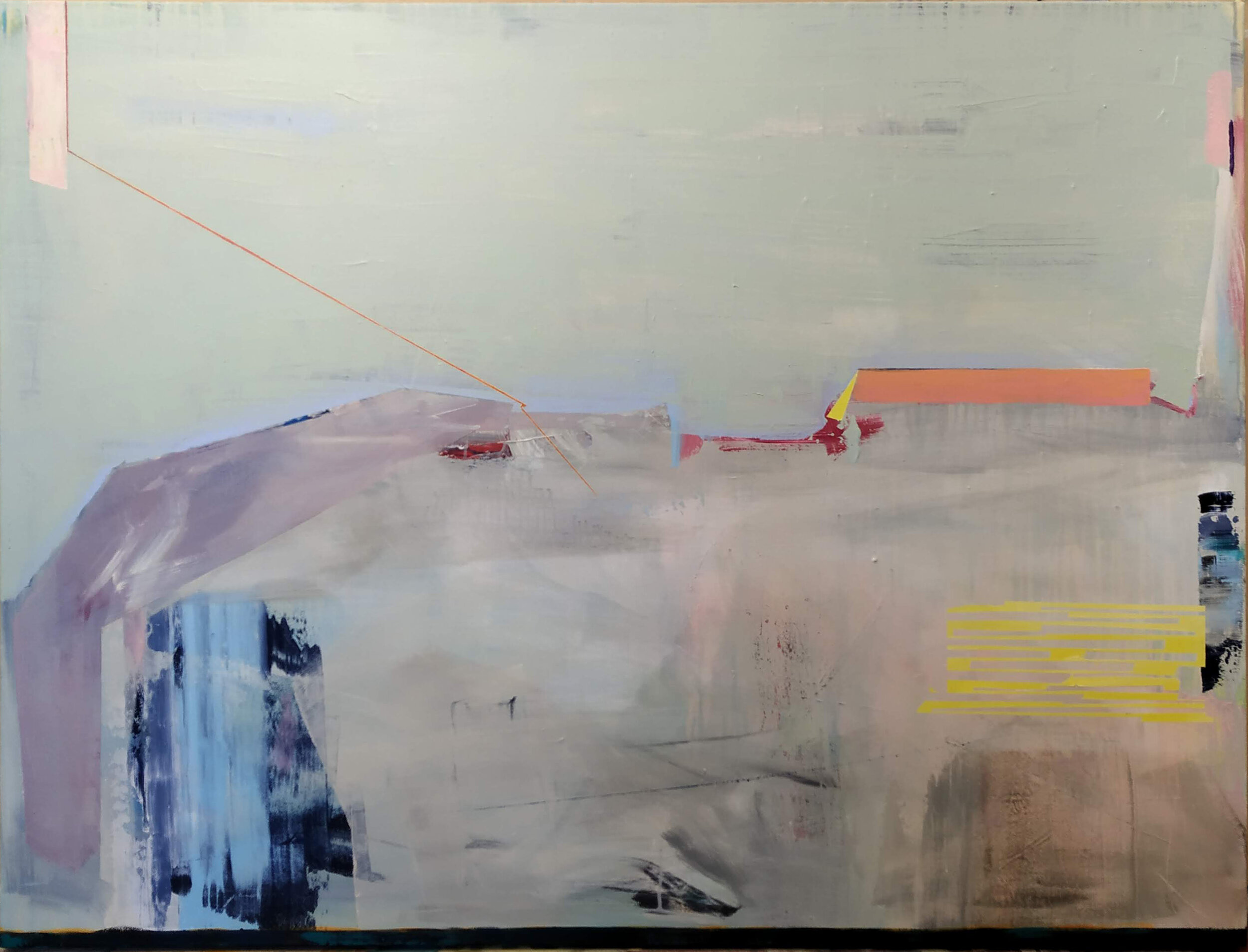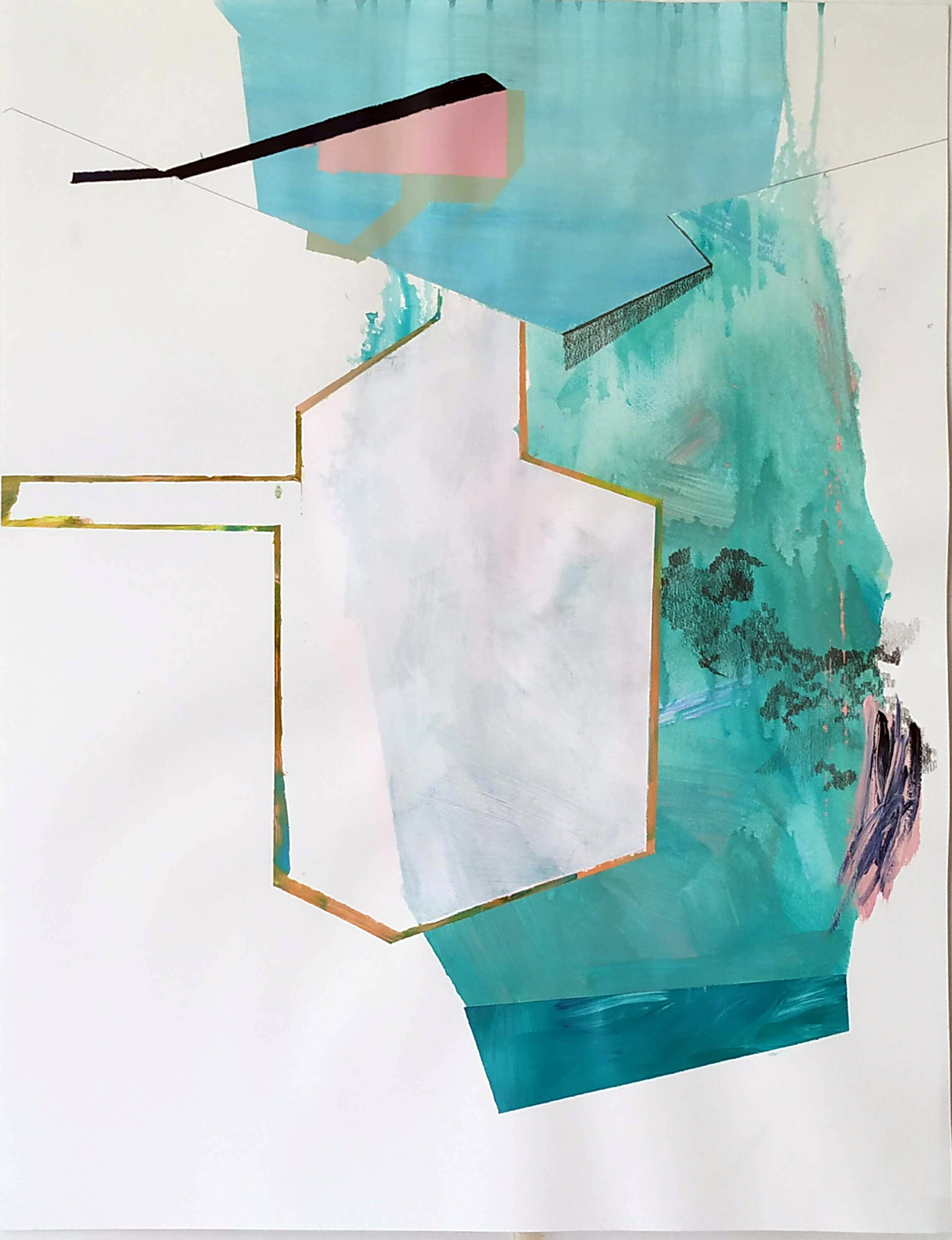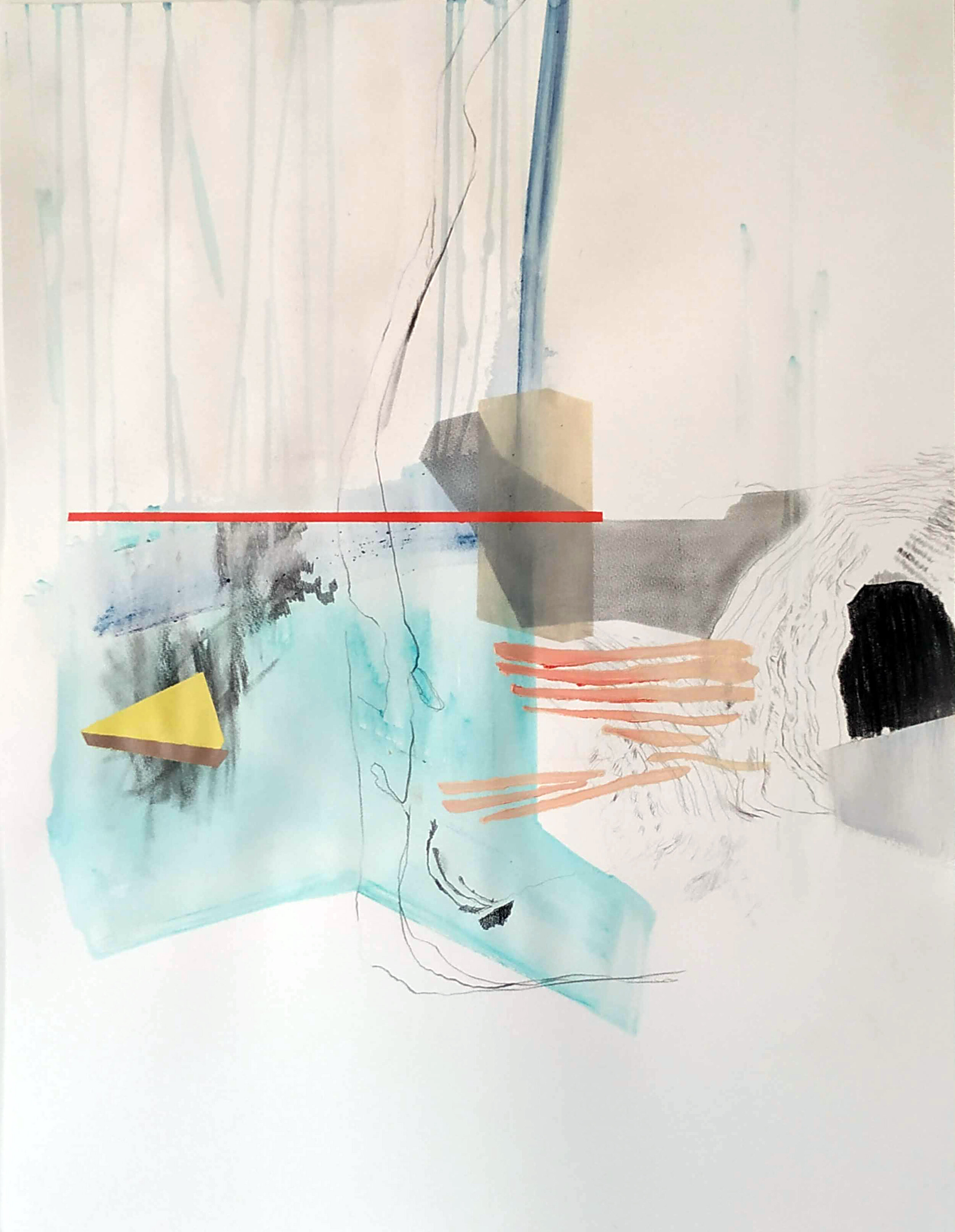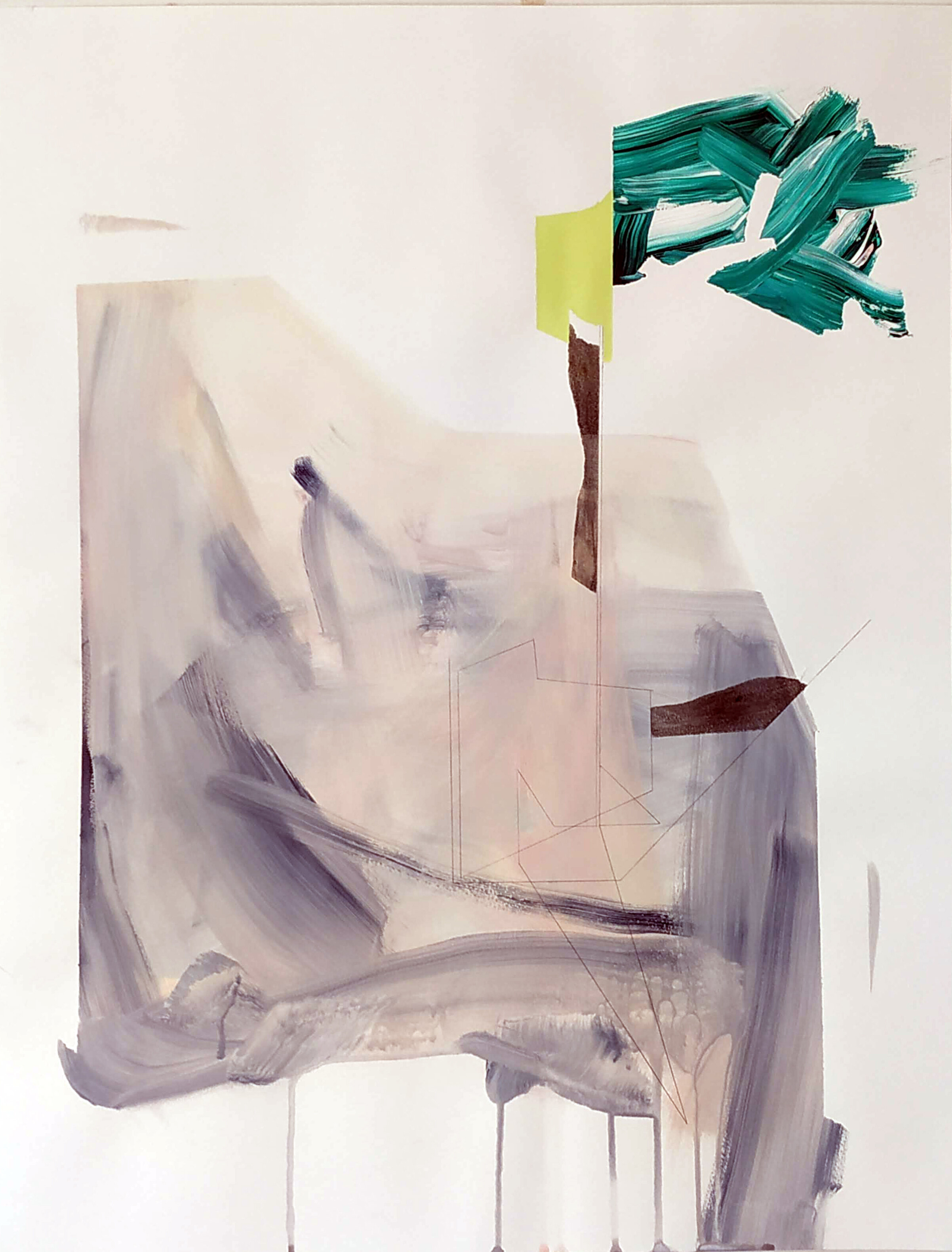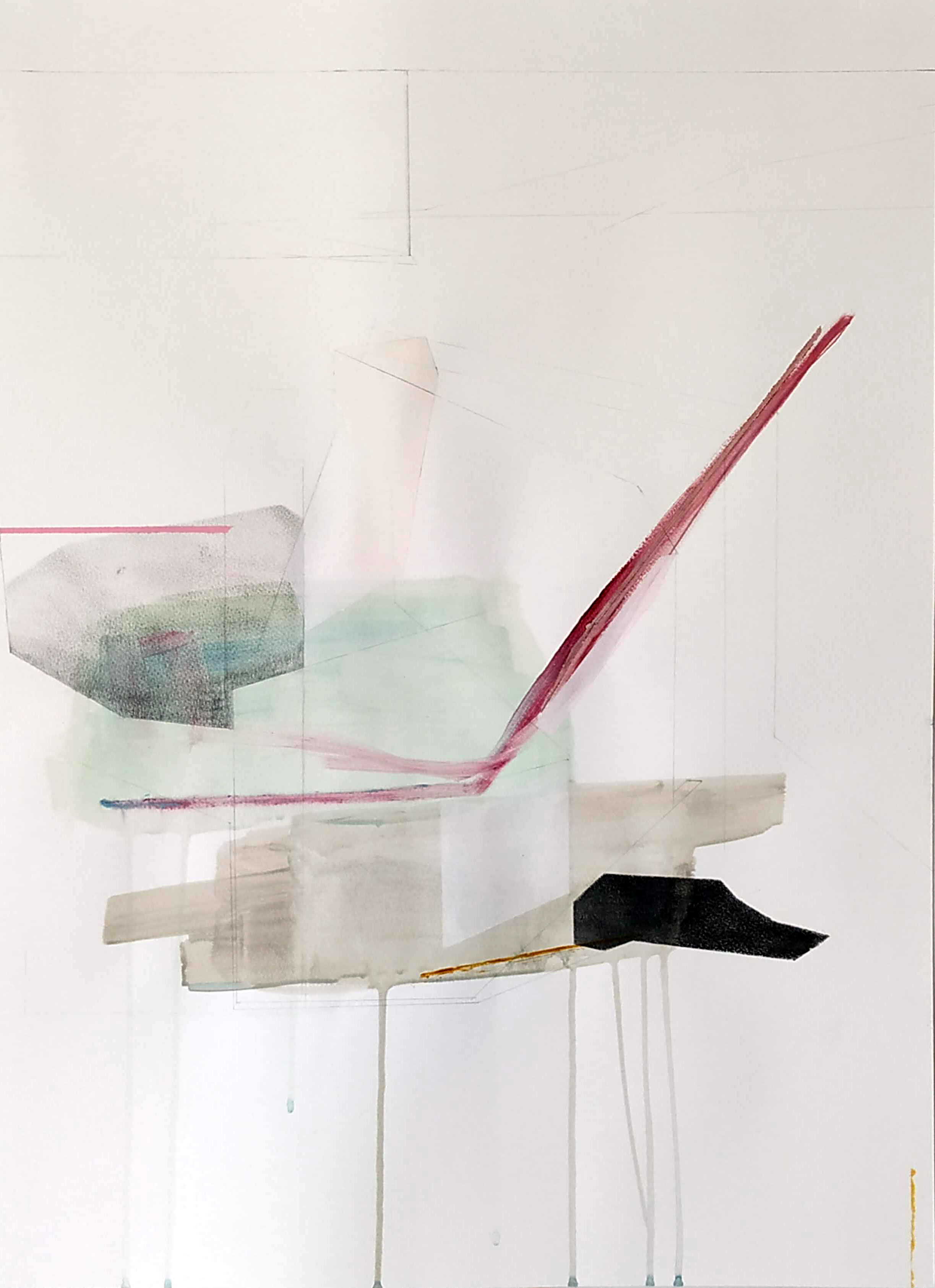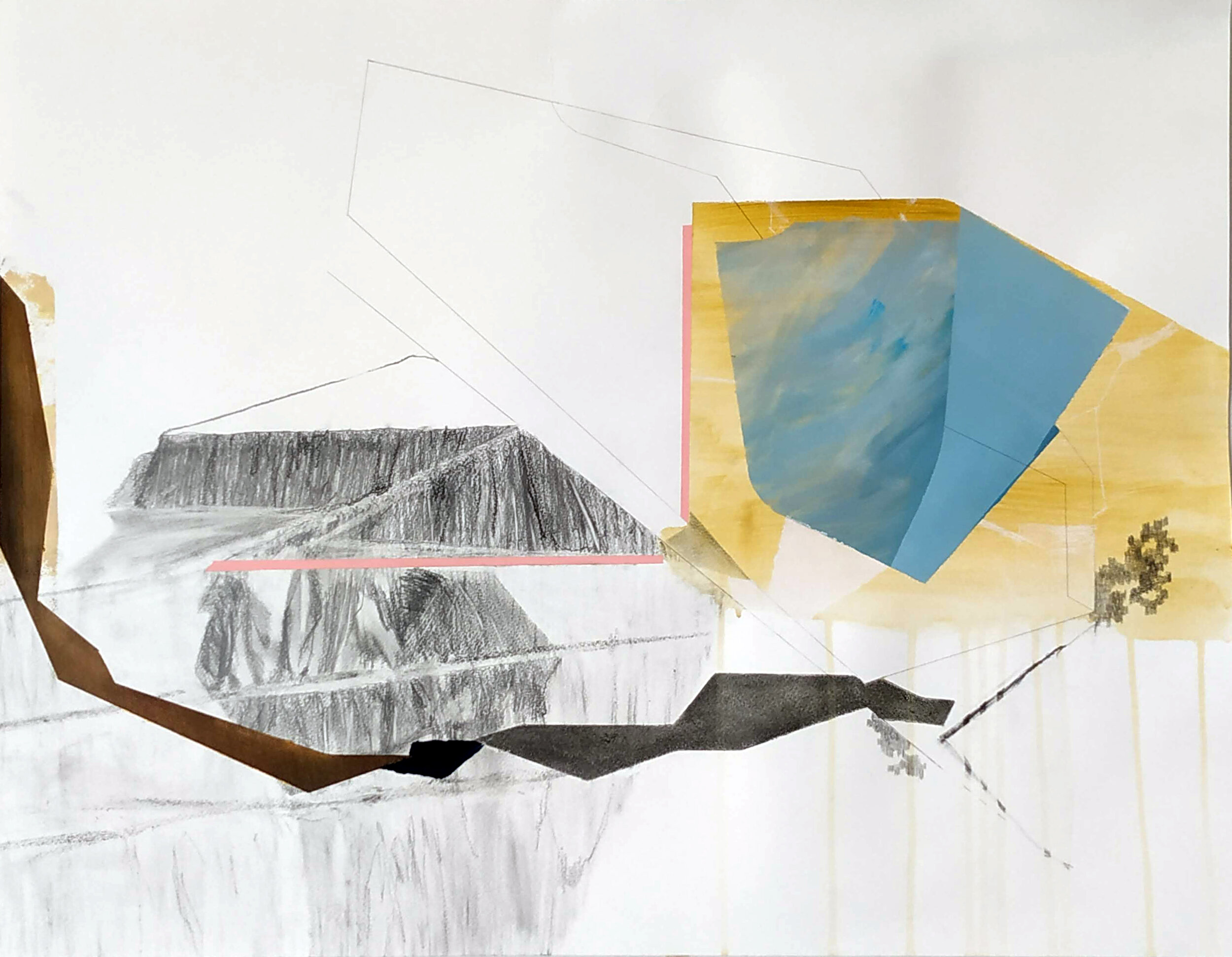A COISA MÍNIMA DO MUNDO - GUILHERME DABLE
A Coisa Mínima do Mundo GUILHERME DABLE
Dable mantém os olhos atentos para as conformações da paisagem, daquela mais larga, em que a linha dos edifícios corta a linha do horizonte, até aquela mais íntima, doméstica, que diz respeito, por exemplo, ao jeito como a cadeira se encaixa na mesa. Todas as arestas interessam, o entorno está cheio delas, basta observar, da janela do quarto à sala de embarque, no aeroporto. Esse extenso e infindável repertório, o artista anota em cadernos de desenho, pedaços de papel e na própria memória. No momento da composição, isso tudo ressurge, mas como mero pretexto. Não se trata nunca de uma base fiel a ser seguida. Não há um apego demasiado às referências construtivas, elas retornam tão somente como uma espécie de eco, uma vaga recordação de percepções das coisas do mundo e de possíveis sínteses representativas.
O tema da representação, caro à História da Arte desde sempre, segue em aberto. Nos desenhos de Dable, que em princípio parecem abstratos, a questão retorna mais ou menos como um fantasma. Há, ali, apenas uma remota identidade entre os planos, as transparências e as linhas que se articulam e o mundo propriamente dito, os ângulos, as retas e as arestas que o artista enxergou no espaço. Essas imagens se fazem visíveis, nos desenhos, apenas como sugestões, latências, quase figuras, que se insinuam, mas não se completam. No encontro de materiais, no encontro de diferentes formas, naquilo que vibra e hipnotiza o olhar, há algo que celebra precisamente a falta, a incompletude, a impossibilidade da separação entre figura e fundo. Convivem, ao mesmo tempo, a memória de algo que já se viu e a promessa de algo que jamais se alcançará.
Dable keeps his eyes attentive to the conformations of the landscape, from the broader landscape, where the skyline cuts the horizon down to the most intimate, domestic landscape, which speaks of, for instance, the way a chair fits a table. All the edges are interesting, the environment is full of them, all one has to do is look, from the bedroom window to the departure lounge at the airport. This huge and endless repertoire, the artist puts down in sketchbooks, pieces of paper, and in his own memory. At the moment the composition is constructed, this all comes back, but merely as a pretext. It is never about having a faithful base that must be followed. There is no huge attachment to constructive references, they come back only as a kind of echo, a vague recollection of the perceptions of worldly things and of possible representative synthesis. The theme of the representation, dear to the History of Art since the beginning, remains open. In Dable’s sketches, which, at first seem abstract, this question returns ghost-like. There is only a remote identity between planes, the transparencies and the lines that are articulated and the world itself, the angles, the straight lines, and the edges that the artist envisaged in the space. These images become visible, in the sketches, only as suggestions, latencies, almost images, that insinuate themselves, but do not complete each other. In the joining of materials, in the joining of different shapes, in that which vibrates and hypnotizes the eye, there is something that celebrates, precisely, the absence, the incompleteness, the impossibility of separating the figure and the background. They remain together, at the same time, in the memory of something that has already been seen, and the promise of something that will never be attained. Eduardo Veras
Coisa Mínima do Mundo
Dable, então, cria uma região flutuante ao estabelecer fecundos diálogos entre suas obras e as paisagens de horizontes cerrados e estreitos existentes tanto nas cercanias da galeria de SP como no ateliê onde produz diariamente, em Porto Alegre. Se o artista passara a infância em uma residência de linhas modernistas na capital gaúcha, o vazio e a harmonia que predominaram nessa urbe de outrora parecem ter se cindido, criando um novo lócus, de capilaridade densa e pontos de fuga cegos. E é desse árido cenário que Guilherme Dable manifesta, diariamente, seu exercício de resistência, ao burilar uma poética de potência indubitável, mesmo que barulhenta, rugosa e permeada por acidentes.
Dable thus creates a floating region when he establishes fruitful dialogues between his pieces and the landscapes of dense and narrow horizons exist both in the surroundings of the art gallery in São Paulo and in the studio where he produces art every day in Porto Alegre. If the artist spent his childhood at a home of modernist lines inhis hometown, the emptiness and the harmony that prevailed in this city from days past might have seemed to split, thus creating a new locus, of dense capillarity and blind vanish points. And it is from this dry setting that Guilherme Dable daily manifests his resistance exercise, engraving poetics of undoubtful power, even if noisy, wrinkly and pervaded by accidents. Mario Gioia
O desenho nas telas de Dable oscila entre uma marcação inicial e uma final. A linha que corre os planos num momento serve para cercar uma área a ser pintada; noutro, delimita a superfície já pintada. Ela se esvai assim do mero caráter projetivo atribuído ao desenho, conferindo-lhe antes um valor de eixo para articular a relação entre esses planos, porém fazendo-o pela anulação de uma estrutura “imediata” de figura e fundo. Ele é um anti-contorno duplamente, naquilo em que não pré-determina o design da pintura, nem produz uma compartimentação que separa em definitivo as áreas, fazendo com que elas se permitam assumir valores conforme as relação com o todo e com segmentos vizinhos. O desenho pode, como dissemos, ser uma marcação final, mas ele não tem um sentido finalista de “concluir” a pintura, de lhe impor o “toque final”.
O sistema de “cortes” da pinceladas vai em sentido análogo. A impressão inicial que algumas partes podem suscitar é a de uma geometria, porém o contrário parece ocorrer. Afinal, a geometria é, queira-se ou não, uma estrutura senão aplicada, um instrumental previamente determinado a partir do qual o artista estabelece um método segundo o qual pretende conceituar o espaço dado da tela. Em Dable, as linhas e planos são antes a busca de um modo de definir até onde uma parte se assenta, quando separa ou junta duas áreas, como a pintura se organiza entre a contenção e o transbordamento da tela. Seria lícito, inclusive, perceber que não é contraditória a coexistência entre alguns desses cortes mais secos e a assimilação dos escorridos de tinta, uma vez que ambos trazem a justaposição entre uma dimensão física (a materialidade propriamente dita) e outra ótica (a organização espacial da tela, com seu jogo entre profundidade e superfície) constituintes da pintura, sem fazer a primeira tentar recalcar a segunda.
Drawing in Dable’s canvases oscillates between initial and final marking. The line in a moment is used to surround an area to be painted; in another, delimits the chosen surface. It empties itself from the projectivecharacter of drawing and valorizes itself as an articulation axle of plans through the annulment of an “immediate” structure of figure and background. It’s an anti-contour: it doesn’t predetermine the design of painting, nor produces a compartmentalization to definitely separate.
The “cut” system of the brushstrokes is analogue. The initial impression is that of geometry, but what occurs is the opposite. After all, geometry gives a pre-determined structure. In Dable, lines and plans define reciprocally until where a part lays, when it separates or gathers areas, how painting organizes itself between restrain and overflow of the canvas. It’s not contradictory the coexistence of some of these drier cuts and the assimilation of paint runoffs, since both of them bring the juxtaposition between a physical dimension (materiality itself) and another view (the spatial organization of the canvas, with its game between depth and surface).
Guilherme Bueno
Essas montanhas não são mero sinônimo de solidez e imobilidade. Até porque elas parecem se deslocar ao longo dos papéis. Combinam-se com a geometria e desdobram-se em diferentes volumes (a lição de Cézanne). Acolhem os sólidos e as arestas que pontificavam na série anterior. Modulam os cinzas do grafite. A representação de montanhas, nesse caso, subverte o próprio padrão de leitura que aquelas composições começavam a sugerir. Qual manifestação de sintoma, a /montanha/ vem deslocar as compreensões que o admirador daqueles desenhos acreditava ter encontrado.
These mountains are not mere synonyms for solidity and immobility. Mainly because they seem to move along the papers. They combine with geometry and unfold in different volumes (Cézanne’s lesson). They embrace the solid and the angles from the previous series. They modulate the gray of the graphite. The representation of the mountains, in this case, subvert the pattern of reading that those compositions started to suggest. Just like a manifestation of a symptom, the /mountain/ dislodges the understandings that the admirer of those drawings believed he/she had found. Eduardo Veras

